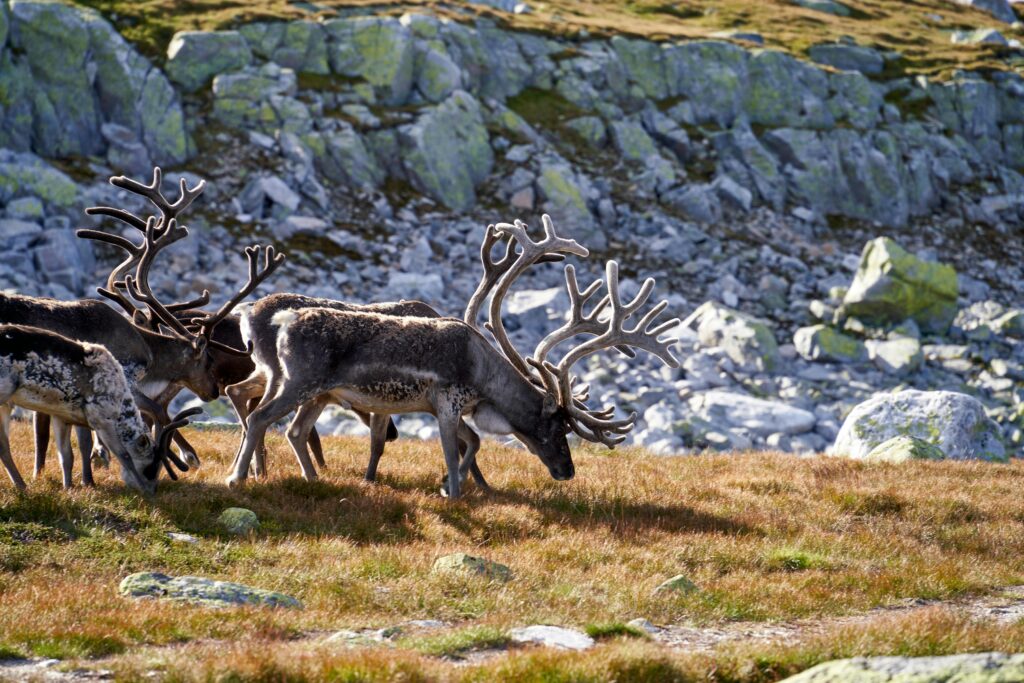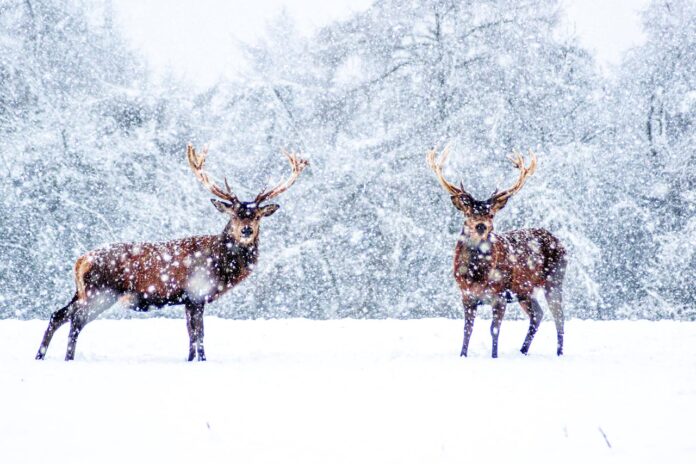Reindeer migration routes you can hike respectfully lead through sweeping tundra, forests, and mountain passes alive with tradition and wildlife.
Joining these ancient trails feels adventurous, offering rare moments alongside roaming herds and untouched landscapes. Yet, every step calls for awareness and respect. Hiking here is not just about exploration but also responsibility. With the proper preparation and mindful choices, you can experience the thrill of the journey while protecting the reindeer and honoring local communities.
The Significance of Reindeer Migration Routes
Reindeer migration is one of nature’s great seasonal journeys. These animals travel hundreds of miles across tundra, forests, and rivers to reach feeding grounds. The routes are more than paths for survival; they are lifelines for entire ecosystems. Birds, predators, and plant cycles all connect to these movements.
For Indigenous communities such as the Sami in Scandinavia or the Nenets in Siberia, the migrations are central to culture and livelihood. Understanding this deep connection helps hikers respect the trails. By seeing the routes as living systems, visitors can step carefully, knowing their presence carries responsibility as well as adventure.

Where You Can Experience Reindeer Migration on Foot
In several northern regions, hikers can follow reindeer migration paths and take in striking landscapes along the way. The Kungsleden Trail in Swedish Lapland is well-known for its valleys where herds pass through during spring and autumn.
Norway offers some of the most memorable experiences, especially on the Finnmark Plateau. Here, the vast tundra stretches endlessly, while Sami traditions add depth to the journey. It’s easy to see why people love living here, with Norway’s outdoor wonders, green initiatives, culture, and inclusivity drawing people closer to nature. Beyond Finnmark, northern Norway also provides breathtaking opportunities to walk alongside migrating herds in settings that feel untouched and authentic.
Across the Atlantic, Alaska’s Arctic National Wildlife Refuge allows visitors to witness massive caribou herds on the move. Wherever you go, these routes provide rare encounters with wildlife, cultural heritage, and awe-inspiring scenery.
Preparing for Your Trek Along Migration Paths
Trekking along reindeer migration routes requires solid preparation. The weather in tundra and Arctic regions can shift quickly, so carrying layered clothing is essential. Good boots protect your feet over long distances, and maps or GPS keep you on course. Food, water, and safety kits should always be packed.
You should also consider the hiking gear you’ll need before setting out, especially for remote Scandinavian trails. Traveling light but smart reduces strain and keeps you safe. Planning well is not only about your comfort—it also ensures you hike responsibly, minimizing disturbance to reindeer and preserving the fragile environment they depend on.

Respectful Hiking Practices to Protect Wildlife
Hiking along reindeer migration routes means sharing space with sensitive animals. Always keep a safe distance from herds to avoid stress or accidents. Move quietly and avoid sudden gestures that might startle them. Stick to marked trails and respect barriers that protect grazing areas. Of course, carry out all waste and leave nothing behind.
Camp only in designated spots when possible. Drones and loud devices should stay packed away, as noise disrupts the herds. Following these practices not only protects reindeer but also preserves the wild character of the places they call home.
Hiking Etiquette With Local Communities
Many migration routes pass through Indigenous lands, where reindeer herding remains vital. In Scandinavia, the Sami people rely on these herds for culture and livelihood. Respect fences, grazing zones, and private cabins along trails. Avoid disturbing working dogs or herders managing animals.
Supporting local guides and buying regional food or crafts helps communities benefit from respectful tourism. Always ask before taking photos of people or property. By showing courtesy, hikers strengthen ties with local traditions while ensuring their journeys support, not disrupt, cultural heritage.
Best Seasons for Hiking Reindeer Routes
Timing your hike is crucial for safety and experience. Spring and autumn are the main migration periods, offering the best chance to see reindeer on the move. Trails are often more accessible in late spring when snow melts, while in arctic autumn the tundra glows with color and herds shift toward winter grazing grounds.
Summer brings long days but also clouds of insects, while deep winter requires advanced survival skills. Choosing the right season ensures a safer journey and a deeper connection to migration.

Safety Concerns on Migration Trails
Reindeer migration routes often cross remote and unpredictable terrain. The weather can shift rapidly, and the environment demands caution. Staying safe means preparing for risks before you set out. Keep these points in mind:
- Sudden storms can bring snow, rain, or strong winds.
- Wildlife encounters may include bears, wolves, or moose.
- Long distances between shelters require careful route planning.
- Cold nights demand reliable clothing and sleeping gear.
- Communication devices and first aid kits are essential.
Top Reindeer Migration Routes You Can Hike Respectfully
Several reindeer migration routes you can hike stand out for their beauty, accessibility, and cultural significance. Each offers a unique chance to walk in step with nature. Here are some of the most rewarding examples:
- Norwegian Finnmark Plateau – Expansive tundra landscapes where herds roam freely, with Sami culture present across the region.
- Swedish Lapland Kungsleden Trail – A long-distance trail cutting through valleys and mountains, often crossed by reindeer in spring and autumn.
- Alaska’s Arctic National Wildlife Refuge – Home to one of the world’s largest caribou migrations, offering vast wilderness and raw encounters.
- Siberia’s Yamal Peninsula – Migration paths used by the Nenets people, combining cultural heritage with rugged, remote tundra hiking.
- Finnish Lapland’s Pallas-Yllästunturi National Park – Well-marked trails with high chances of spotting reindeer during seasonal movements.
Supporting Conservation Through Responsible Hiking
Hiking reindeer migration routes is more than a personal adventure—it also supports conservation when done responsibly. Many trails require permits or fees that directly fund habitat protection.
Choosing eco-certified guides and local services ensures your money helps sustain both wildlife and communities. Donations to conservation programs can further protect migration corridors from development.
Simple actions—packing out waste, sticking to marked paths, and minimizing campfires—help preserve fragile tundra. Responsible hiking shows respect both for reindeer and the people who depend on them.
A Journey Shared With Nature
Reindeer migration routes you can hike offer both adventure and responsibility. These paths reveal wild beauty, living traditions, and fragile ecosystems. By preparing well, respecting wildlife, and honoring local communities, hikers ensure these routes remain protected. Every step taken with care supports both reindeer and the culture tied to their journey. Whether in Scandinavia, Siberia, or Alaska, walking these trails provides rare moments of connection. Hike respectfully, and the migration will continue to inspire generations to come.
Reindeer Migration Routes You Can Hike Respectfully, written for Daily Scandinavian by Emelia Collins. Emelia is an outdoor writer and avid hiker passionate about Arctic trails and cultural heritage. She shares practical advice for adventurers seeking meaningful journeys that respect both the land and the communities that call it home.
Feature image (top): (c) Lewis Ashton/Pexels


